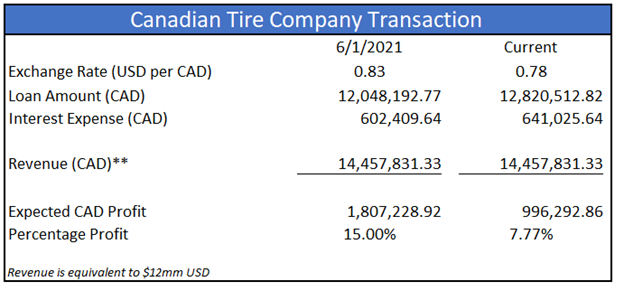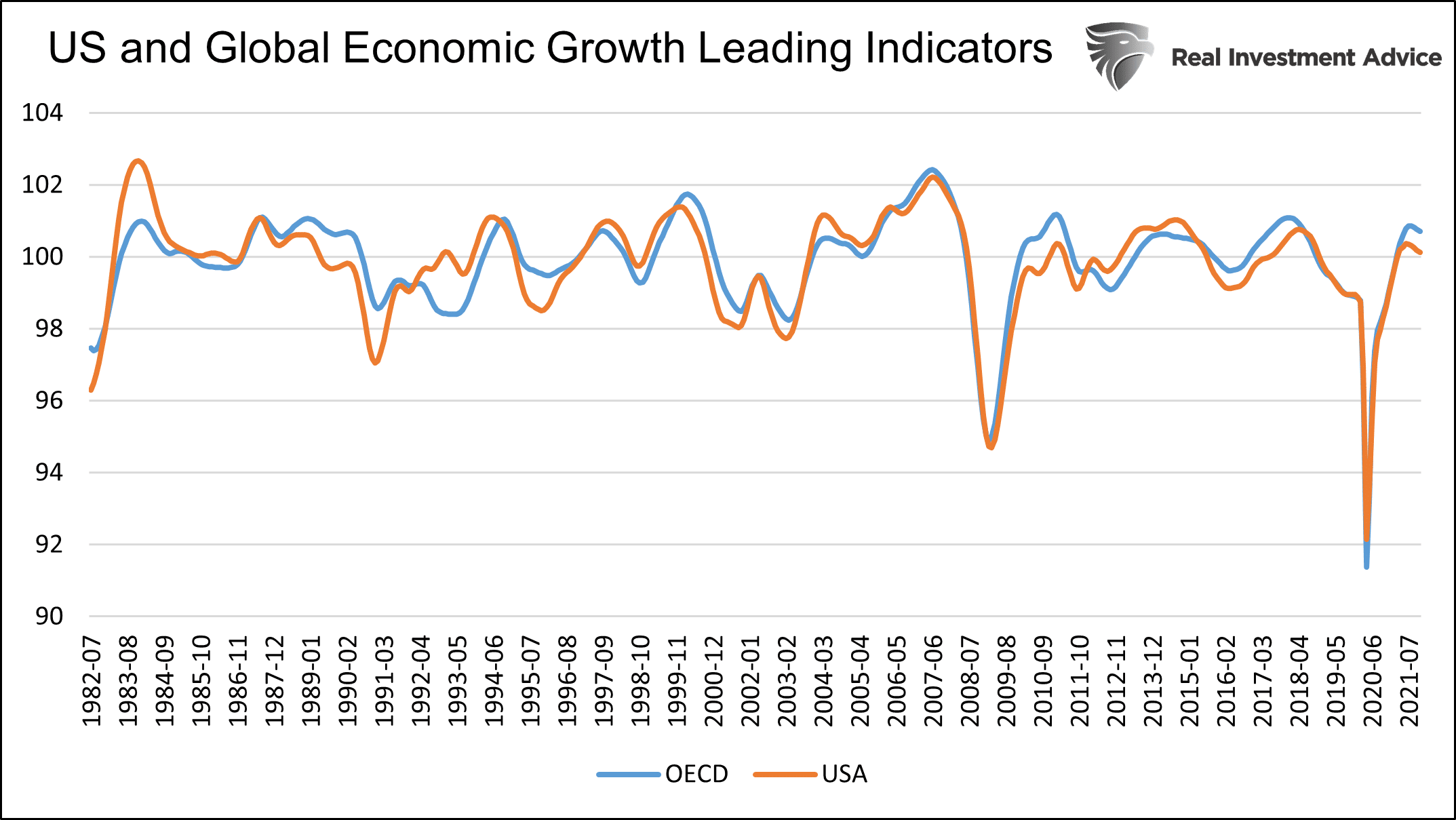The Fed’s liquidity fire hose supported the massive government fiscal response to COVID. Through unprecedented asset purchases, the Fed provided enough liquidity to allow the U.S. Treasury to increase its debt burden grossly at historically low yields. Its actions bolstered asset markets and weighed on the dollar in the process.
The Fed is starting to reduce liquidity, and global markets are beginning to stir. The dollar, for one, is on the rise, and with it comes underappreciated consequences.
Most investors know dollar appreciation makes imports cheaper for the U.S. and more expensive for other nations. As such, the dollar affects which countries gain or lose competitive advantages in global trade.
Lesser appreciated, the U.S. dollar is not just America’s currency, but the world’s. Its value versus other currencies significantly affects borrowing costs for foreign entities.
As a result, the Fed dramatically influences global economic activity through its monetary policy.
Unless otherwise noted, all references to the dollar in this article refer to the U.S. dollar.
Background- Dollar Hegemony
Before we discuss how the Fed impacts the global economy, it’s worth a brief review of the dollar’s role in the post-WWII era.
One of our most critical macroeconomic articles is Triffin Warned Us. The article describes the Bretton Wood Agreement of 1944 and Robert Triffin’s Paradox.
“By decree of the Bretton Woods Agreement of 1944, the U.S. dollar supplanted the British Pound and became the global reserve currency. The agreement assured that a large majority of global trade was to occur in U.S. dollars, regardless of whether or not the United States was involved in such trade.”
Since 1944, the U.S. suspended the convertibility of dollars to gold, and most countries allow their currencies to float versus the dollar versus remaining fixed. Those were two key tenants of the agreement that no longer exist. While the terms of the agreement may be void, the dollar remains the world’s reserve currency. With that, the Federal Reserve is de facto the world’s central banker.
As an aside, Robert Triffin recognized the inherent benefits of a global reserve currency, but also its “paradox.” Triffin argues, the benefits of a reserve currency will create global imbalances and an “inevitable tipping point or failure.”
How The Dollar Affects Global Liquidity
When a Canadian tire company buys rubber from a Philippine rubber producer, the payment typically occurs in U.S. dollars. Both countries have their own currencies, but neither currency has the liquidity and, quite frankly, the world’s largest economy and military power backing it. For these reasons and others, most recipients in foreign trade prefer receiving U.S. dollars.
Because so many foreign countries and companies transact with dollars, they often borrow in dollars and hold dollar reserves. They do this despite the fact their revenue is often not in dollars. It also helps that dollar funding can be cheaper due to greater liquidity in U.S. credit markets.
However, with dollar funding and dollar appreciation comes dollar risk.
The Loonie Tire Company
Let’s consider Loonie Tires, a hypothetical Canadian tire company, and the currency risk they take when borrowing in dollars. This analysis helps understand why the value of the dollar is such an important determinant of borrowing costs and, therefore a global economic lynch pin.
On June 1, 2021, the Loonie Tire Company borrows $10 million U.S. dollars for one year to purchase rubber. They hope to sell the tires in Canada for the equivalent of USD 12 million. The interest on the debt is USD 500,000, assuming a 5% interest rate. The transaction should result in a USD 1.5 million or 15% profit assuming no other expenses.
The tire company is borrowing in U.S. dollars, but the sale of tires are in Canadian dollars.
On June 1, 2020, one Canadian dollar bought .83 U.S. dollars. Since then, dollar appreciation versus the Canadian dollar is resulting in an exchange rate of .78 U.S. dollars per Canadian dollar.
The table below compares the transaction’s P&L using the initial exchange rate and the current exchange rate.

Loonie’s New P&L
Assuming the U.S. dollar/Canadian dollar relationship stays the same, Loonie’s expected profits go from 15% to 7.77%. Effectively the cost of borrowing is not 5% as they presumed but nearly 13%. If the loan were to mature today, Loonie would have to pay back almost $800,000 more in principal and $40,000 more in interest than initially expected.
Suppose the future currency exchanges are not hedged, as in our example. In that case, foreign borrowers of U.S. dollars are subject to higher borrowing costs if the dollar rises versus their local currency. Simply the local currency depreciates versus the dollar; therefore, they need more of the local currency to make good on their debt. Because of this construct, dollar appreciation effectively tightens financial conditions on the rest of the world.
Today
Over the last few months, the Federal Reserve has taken on a more hawkish tone. Economic activity is more robust in the U.S. than in most of the world, and its inflation rate is higher. The justification for halting QE and raising rates is palpable. The currency markets are signaling through a stronger dollar, the Fed will remove emergency accommodations quicker than most other nations.
As a result, the U.S. dollar index has appreciated 7.7% this year to date. The list below shows how much selected currencies depreciated against the dollar over the same period.
- Euro -8.7%
- Pound -3.5%
- Yen -10.2%
- Canadian $ -1.3%
- Australian $ -9.0%
The only major currency to appreciate against the dollar is the Chinese Yuan (+2.5%).
The dollar’s value does not influence debt costs for United States domestic borrowers. As we portray in the Loonie example, that is quite the opposite for foreign borrowers.
As the dollar appreciates, foreign borrowers of U.S. dollars need more U.S. dollars to pay the loan’s interest and the principal. When borrowers raise the dollars required to meet their obligations, they cause further dollar appreciation. At times, especially during a crisis, when many borrowers are forced to take such actions, a global run on the dollar occurs and pushes the dollar significantly higher, worsening problems for dollar borrowers.
Summary
The hawkish Fed tones and robust economic growth are feeding dollar strength. While the Fed does not directly manage monetary policy for foreign nations, they profoundly affect financial conditions abroad. Assuming current trends continue, the Fed’s words and actions and resulting dollar reactions will increasingly become an important factor worth following.
Why should we care about foreign borrowers and global economic activity?
The graph below shows the strong correlation between the OECD’s U.S. leading economic indicator and its broader index for the global economy.

An old saying says the U.S. catches a cold, and the world gets the flu. Might the dollar and the Fed cause the world to catch the flu, thus causing Uncle Sam to get the sniffles?
